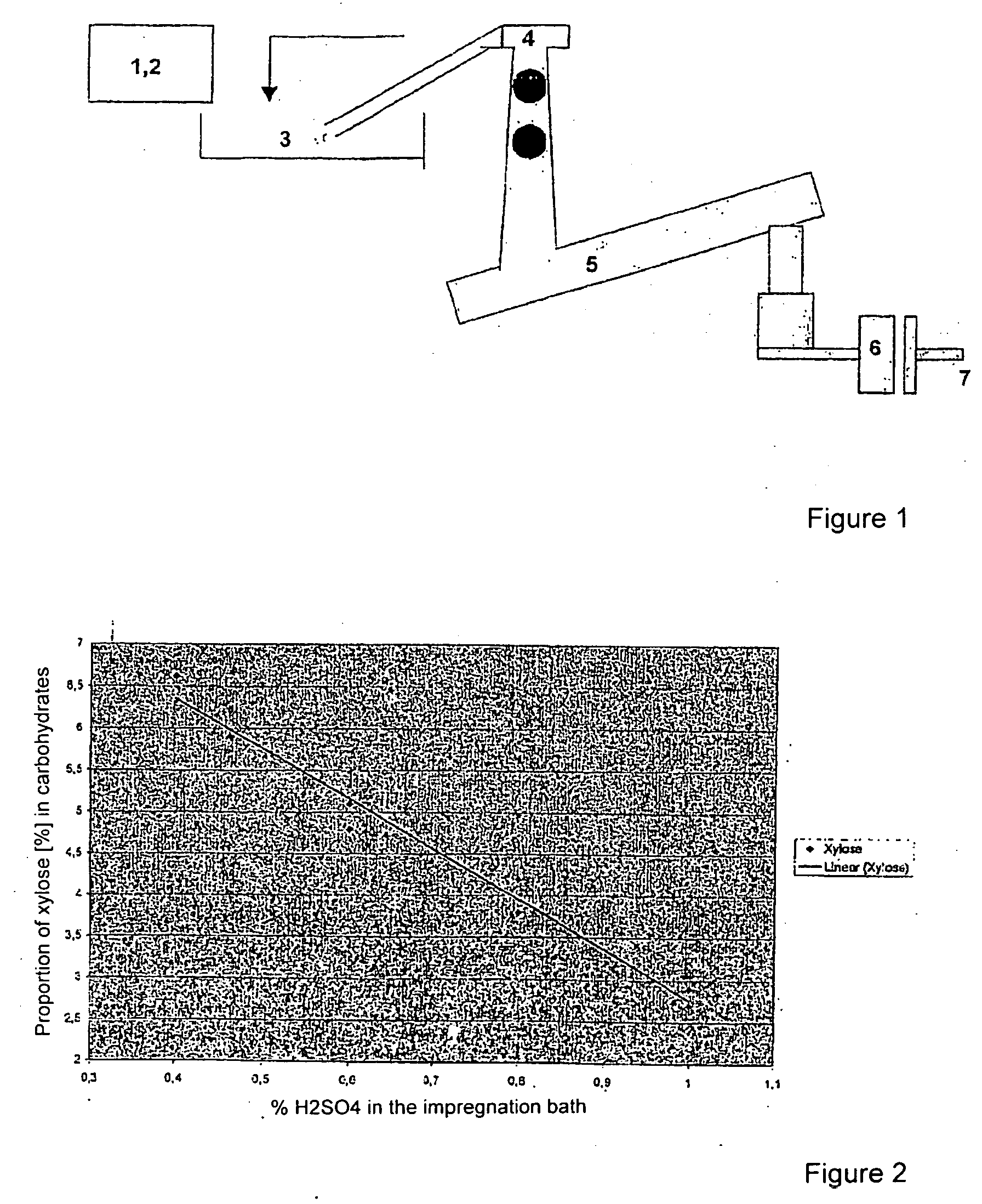Method for separating xylose from lignocelluloses rich in xylan, in particular wood
a technology of lignocellulose and xylan, which is applied in the field of separating xylose from lignocellulose rich in xylan, can solve the problems of large components and high investment requirements, and achieve the effects of low investment requirement, high cellulose yield and low cos
- Summary
- Abstract
- Description
- Claims
- Application Information
AI Technical Summary
Benefits of technology
Problems solved by technology
Method used
Image
Examples
examples
[0041] Some embodiment forms of the method according to the invention will be illustrated in detail with reference to the accompanying FIGS. 1 and 2.
[0042] As is shown in FIG. 1, uniformly comminuted commercial wood chips (1) from which dirt has been removed are first moved along the MSD (2), wherein the wood structure is extensively destroyed and the natural moisture is considerably reduced (by approximately 50% to approximately 20-25%). By MSD is meant a worm press with the characteristic that the shaft of the worm compresses with increasing distance from the feed point of the wood chips. Accordingly, there is less free space available for the wood chips. The worm rotates slowly and the wood chips are conveyed into a perforated steel plate. The water which exits as a result of the crushing and pressing of the wood chips can be discharged through the perforated steel plate.
[0043] As a result of the treatment described above, the wood chips are absorbent for the diluted acid (3) w...
PUM
| Property | Measurement | Unit |
|---|---|---|
| Temperature | aaaaa | aaaaa |
| Temperature | aaaaa | aaaaa |
| Temperature | aaaaa | aaaaa |
Abstract
Description
Claims
Application Information
 Login to View More
Login to View More - R&D
- Intellectual Property
- Life Sciences
- Materials
- Tech Scout
- Unparalleled Data Quality
- Higher Quality Content
- 60% Fewer Hallucinations
Browse by: Latest US Patents, China's latest patents, Technical Efficacy Thesaurus, Application Domain, Technology Topic, Popular Technical Reports.
© 2025 PatSnap. All rights reserved.Legal|Privacy policy|Modern Slavery Act Transparency Statement|Sitemap|About US| Contact US: help@patsnap.com

